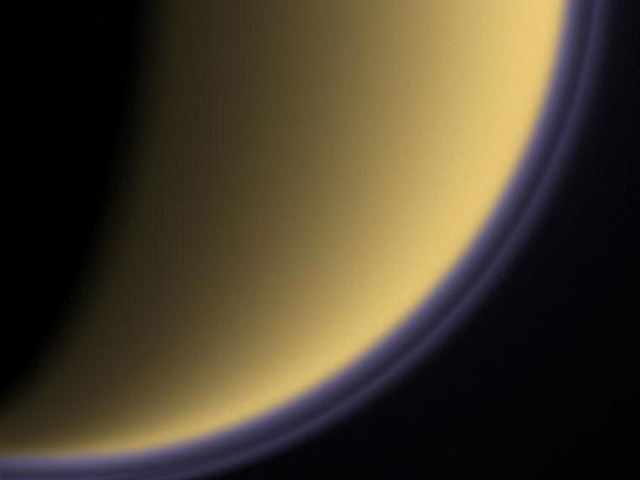
|
Explanation: Most moons have no haze layer at all - why does Titan have two? Images from the Cassini spacecraft that slipped into orbit around Saturn last month confirm that the Solar System's most mysterious moon is surrounded not only by a thick atmosphere but also by two distinct spheres of haze. These layers are visible as purple in the above false-color ultraviolet image. Titan's opaque atmosphere is similar to Earth's atmosphere in that it is composed mostly of nitrogen. As energetic sunlight strikes high level atmospheric nitrogen and methane, trace amounts of organic compounds such as ethane and carbon dioxide appear to form. These and other complex organic molecules likely populate the detached haze layer. In December 2004, Cassini will launch the Huygens probe to land on Titan.
|
January February March April May June July August September October November December |
| |||||||||||||||||||||||||||||||||||||||||||||||||||||||
NASA Web Site Statements, Warnings, and Disclaimers
NASA Official: Jay Norris. Specific rights apply.
A service of: LHEA at NASA / GSFC
& Michigan Tech. U.
Based on Astronomy Picture
Of the Day
Publications with keywords: Titan - cassini spacecraft - atmosphere
Publications with words: Titan - cassini spacecraft - atmosphere
See also:
